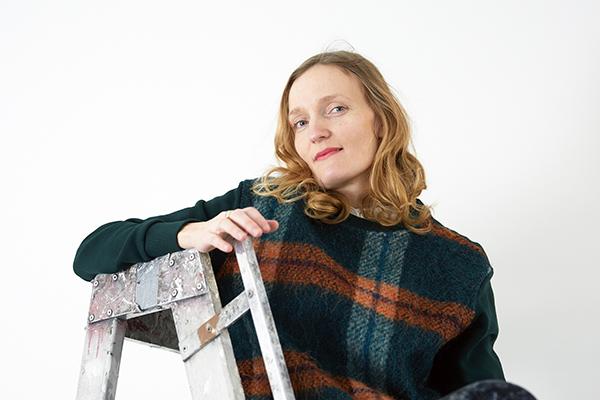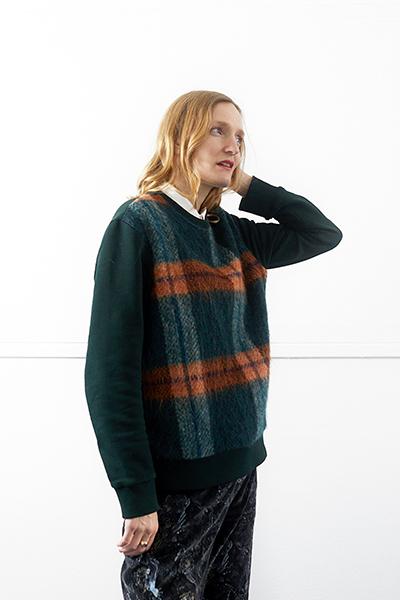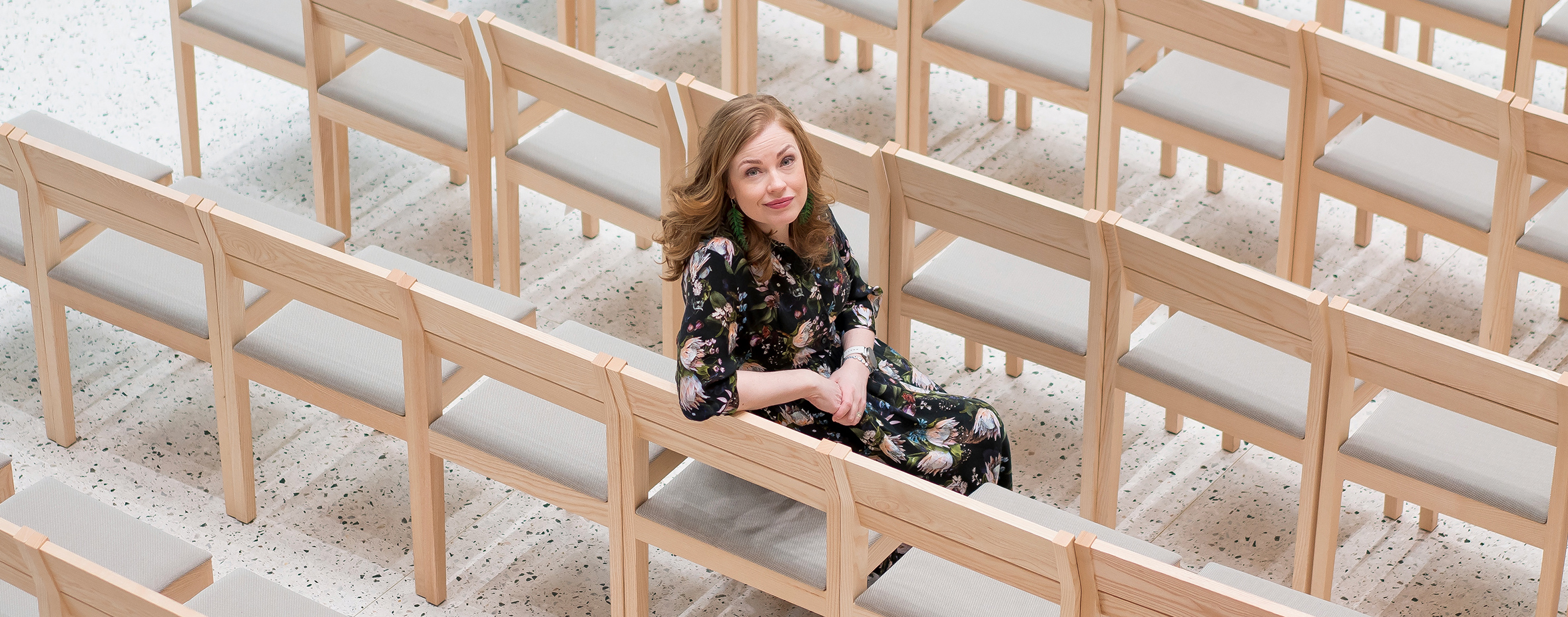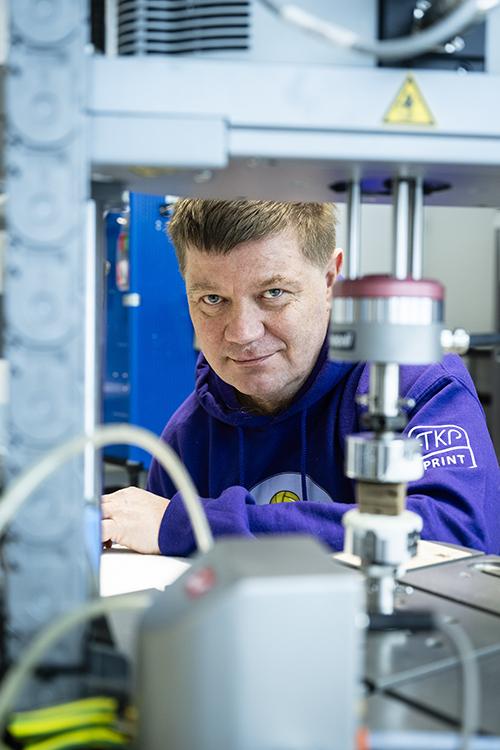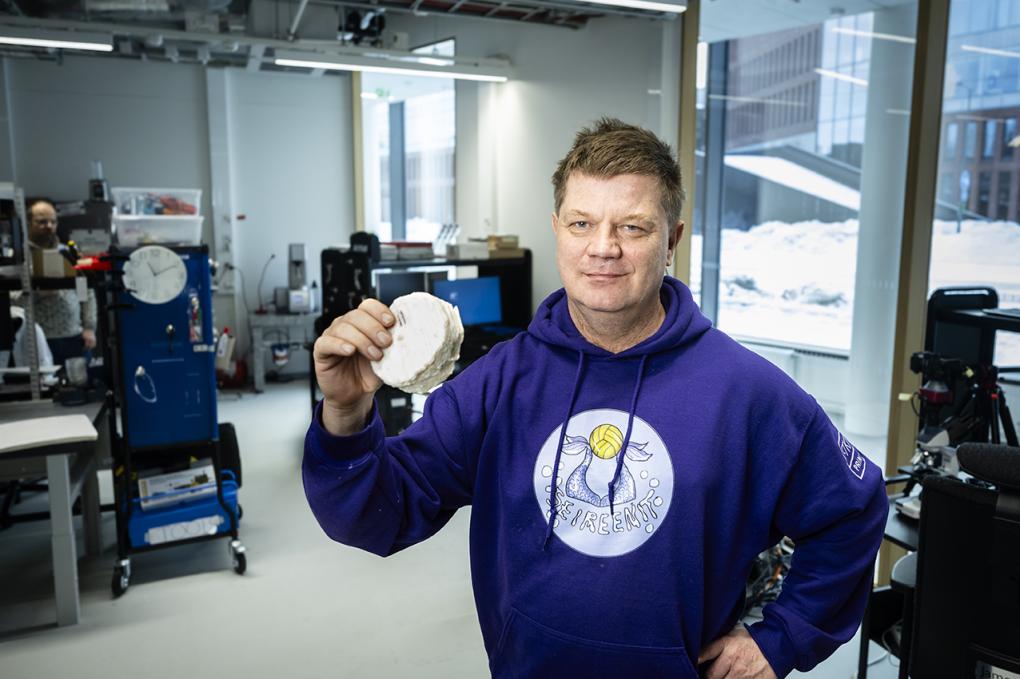The Voice of Contemporary Art

A soprano voice playing from a record player fills the space. The sound is a conflicting blend of self-examination and justification of a grave robber’s remorse and shame. It belongs to Confession Piece for Voice, a sound installation created by artist Jonna Kina in collaboration with composer Lauri Supponen. The artwork was exhibited at Helsinki Contemporary in 2021, and it is now part of the Museum of Contemporary Art Kiasma’s collections.
Sound has always been the most important of all senses for Kina. She reflects on her works through sound even when they are silent.
“The capability of sound to directly affect our emotional register is ultimately a multisensory experience. That’s why sound is a natural element in visual arts, where silence is a typical characteristic of space. I am fascinated by how sound can operate on the boundaries of the emotional, intuitive, and conceptual, even the irrational”, Kina says.
Interpreter of new worlds
Kina feels most comfortable on the edge of something new. As an artist, she observes her surroundings, and creates new worlds based on her interpretations. In addition to sound, Kina uses moving image, installation, photography, sculpture, and language in her works. Not everything can be verbalized though—if it could, making art could become boring.
Sometimes Kina’s works arise from a compelling need. She might be haunted by something that calls for her attention. This was the case with the exhibition series about the grave robbers.
The story begun in Mazzano Romano in 2017. Kina attended an artist residency in the small Italian village, where she found a jar belonging to the Faliscan culture in a local archaeological museum. The ancient, grave-robbed object captivated the artist, who returned to look and photograph the jar again and again.
The object eventually became part of a video piece titled Red Impasto Jar, a moving portrait of the jar placed on top of an industrial motor, which, as it spins, reveals the fragile essence of the jar to the viewer.
“The story of the jar is unknown but it was intended for the afterlife. I had to make a piece out of it to break free from its spell. The jar made me wonder if it is right to present a culture or a language one does not know, or if the museum has the right to present an object that belongs to another person’s memory”, Kina says.
Mobility opens new doors
Last autumn, Kina spent three months at the Fabrikken residency in Copenhagen funded by the Finnish Cultural Foundation. Kina, who earned a master’s degree from the Uniarts Helsinki’s Academy of Fine Arts, has also studied and worked in New York and Jerusalem. She says that the importance of mobility only comers clear when an opportunity to travel arises.
“A new environment activates the senses and generates new thoughts very differently from the familiar home environment. Through traveling comes a revelation that no one comes to Finland just passing by. Sometimes it can be long after the residency when I realize what I achieved, and how my work progressed”, she says.
According to Kina, establishing international contacts is one of the most important aspects of an artist residency. In Copenhagen, she met curator Nadim Samman, who invited Kina to participate in a group exhibition at the KW Institute for Contemporary Art in Berlin this spring. Her piece Secret Words and Related Stories will be on display, and in March Kina will hold a reading performance.
Apart from meeting the curators, Kina finds exchanging ideas with fellow artists fascinating. During her time at Fabrikken, she was mentored by local contemporary artist Joachim Koester.
“Another artist understands the different stages of the process and work-related matters, such as materials and forms, at a microcosmic level. Exchanging technical advice is useful too”, she says.
Artistic Inventory
Last year, Kina’s career and personal life were full of meaningful events. She took part in three international museum exhibitions, a gallery exhibition, and also became a mother for the first time. After a busy period, Kina wants to take time to reflect her life, and to hold what she calls an artistic inventory.
“An artist is not a machine. I want to quiet down, and proceed slowly in order to have space for something new. Once in a while it’s important to get lost in order to suddenly find yourself in the middle of something interesting, and let it lead somewhere”, Kina says.
The current atmosphere has also led Kina to contemplate her work and art in relation to everything else. In a world filled with threats, the significance of art has become even more emphasized, she says.
“I want to remember to think of the good, and to approach things that touch me, but which the present society does not call for. Art is a channel through which all sorts of things can be addressed”, Kina concludes.
Artist Jonna Kina received a residency grant in 2023. She worked for three months at Fabrikken Residency in Denmark in the autumn of 2023.
